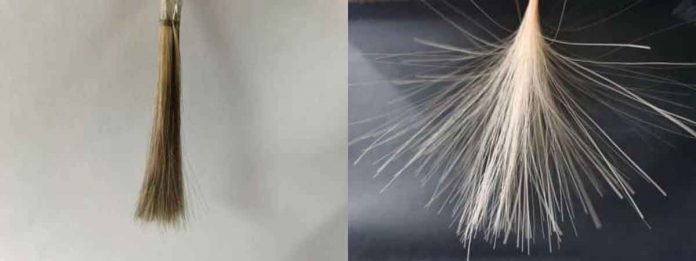Wigs are a fun and colorful fashion accessory for some people, but for those who have hair loss due to alopecia or other conditions, they can provide a real sense of normalcy and boost self-confidence. Most hairpieces, whether made of human or synthetic strands, lose their luster after being worn day after day. Researchers report in ACS Applied Materials & Interfaces a new method for making wigs more durable and long-lasting.
Wigs are available in every color of the rainbow and in every style imaginable. Some are full-coverage, while others are “extensions,” or sections of hair that clip onto existing locks to make them appear fuller or longer. Hairpieces can be made of natural or synthetic human strands, but washing, UV exposure from the sun, and repeated styling can cause these products to become dry and brittle. To make wigs last longer, some researchers spray-coated them with graphene oxide, while others immersed wig hairs in a keratin/halloysite nanocomposite.
Because it is difficult to cover an entire hairpiece with these methods, Guang Yang, HualiNie, and colleagues wanted to see if a nanocomposite combined with a tried-and-true technique for coating surfaces with ultrathin films, known as the Langmuir-Blodgett (LB) technique, could improve coverage and durability.
As the coating material, the researchers first created a keratin and graphene oxide nanocomposite. They used the LB method to coat hairs by dipping a few human or synthetic hairs into water in a special apparatus with moveable side barriers. After spreading the nanocomposite on the water’s surface with an atomizer, the barriers were moved inward to compress the film, much like the trash compactor in the film “Star Wars.” After 30 minutes, the researchers removed the hairs from the water and the film-coated the locks as they did so.
The LB method provided more coverage than the immersion technique. Furthermore, hairs treated with the LB method suffered less UV damage, were less prone to breakage, and could retain more moisture than those simply immersed in the nanocomposite. When rubbed with a rubber sheet, they also dissipated heat more effectively and generated less static electricity. According to the researchers, the method can be scaled up for use by wig manufacturers.

